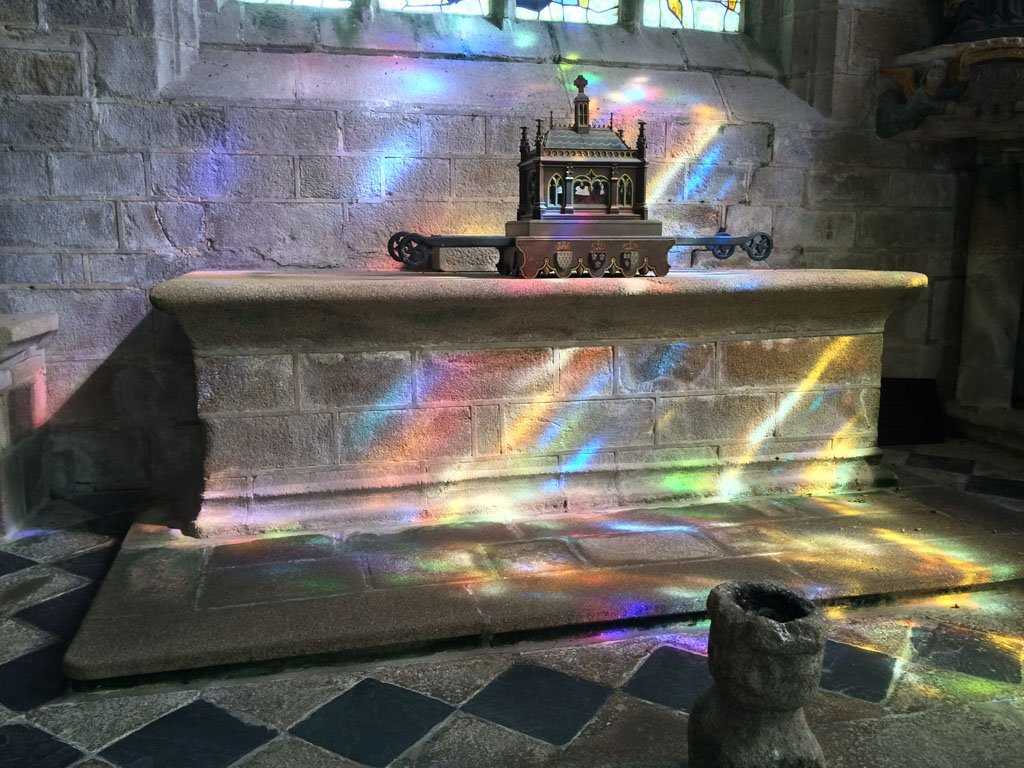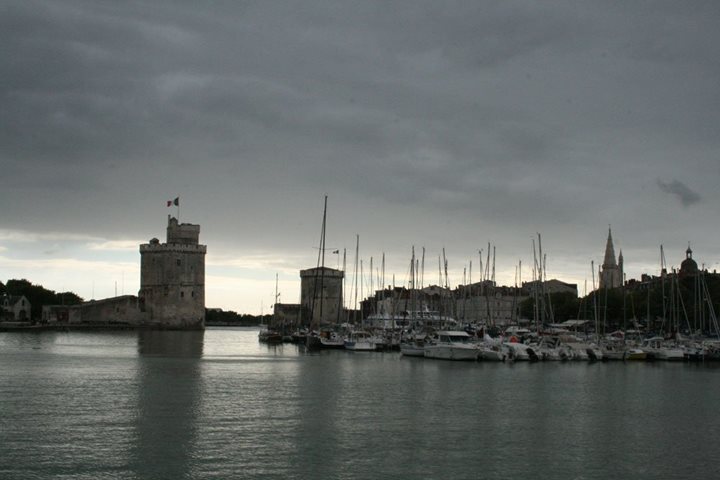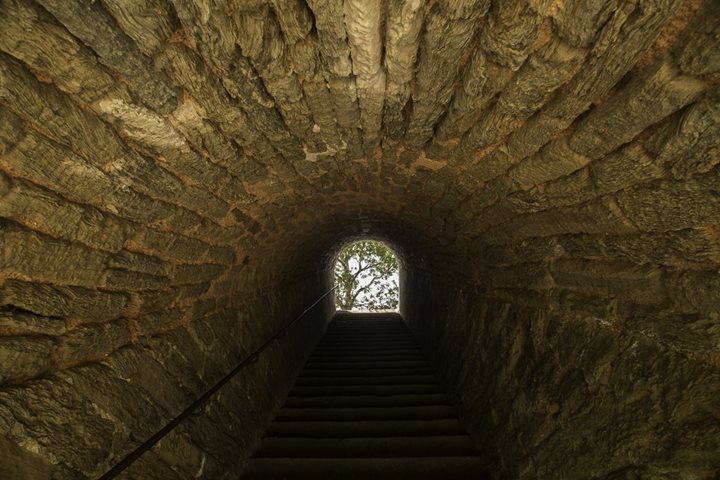Dawn came late this morning in this westernmost extremity of France, the first fingers of light not creeping over the horizon until 7.30am. Overnight our course took us along the north coast and around the tip of Brittany, as the bright beam from the Finisterre lighthouse illuminated the darkness.
As we sailed on, further light was cast upon historical and cultural aspects of our travels in a series of morning presentations, first about the phenomenon of medieval pilgrimage, then the significance of the French Revolution. David Barnes described how modern European history conventionally starts in 1789 with the storming of the Bastille, leading to the many important developments such as the birth of democracy in Europe with the precedent of one man one vote, the Republican model of government, the rise of Napoleon, and even the birth of French cuisine. Jacob then introduced us to the ‘surprising sounds’ of Brittany. Part of the Celtic world, bagpipes are popular here, along with instruments such as the button accordion, and folk dancing to voice music, traditions which have seen a strong revival since the 1970s in a contemporary context.
Soon we arrived in the historic Bay of Douarnenez, a fishing town with four harbours famous for its sardines. Waiting to greet us were some of the traditional dancers in their gorgeous, colourfully embroidered costumes, the women in their lace caps, and some galettes to taste.
The bus ride to Locronon meandered through the beautiful countryside of western Brittany – sandy beaches, scattered villages, and granite farmhouses. Locronon is an exquisitely preserved town full of delightful stone houses and everywhere hydrangeas blooming in gardens and on window sills. The name ‘Locronon’ means ‘hermitage of Saint Ronan’ in the Breton language, an Irish hermit who came here in the 6th century, and whose relics in the medieval parish church are venerated to this day. This has given rise to La Troménie, a 12 kilometre long religious procession for which Locronon is famous. Our guided walk through the narrow lanes of the ancient town took us to the simple and lovely stone Chapel of Notre Dame de Bonne Nouvelle, one of the twelve stations of this procession.
The town prospered in the 15th century, in great part due to the cultivation of flax and hemp and the weaving of linen, and the production of canvas for ships’ sails, which was exported internationally, becoming, in the 18th century, the main supplier to the reknowned Compagnie des Indes. Then we arrived at the main square, paved with cobble stones and with a well in its centre, surrounded by fine typically Breton stone houses dating from the 16th and 17th centuries, and the beautiful 15th century church of St Ronan. Here we rested, and enjoyed one of the local delicacies, the kouign amann, or Breton butter cake, fresh, still warm, and absolutely delicious. The afternoon was completed with a demonstration of traditional Breton music and dance in the square. Each dancer was attired in a wonderful costume representing different areas and time periods, such as would have been worn every week to attend church, and worn today with great pride. The spectacle of the dancers, the square surrounded by those Renaissance granite town houses, the music, and the taste of the butter cake, made a truly memorable occasion.





